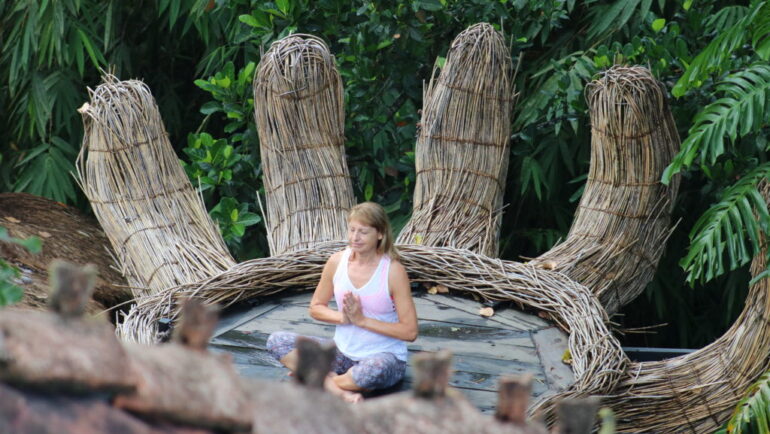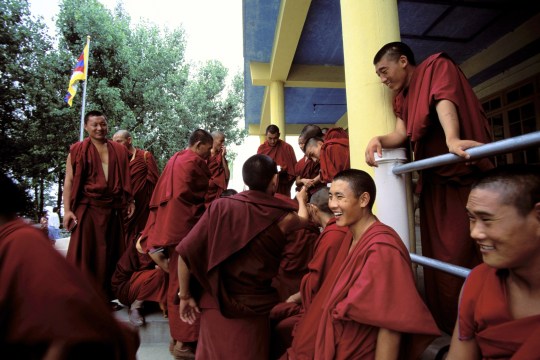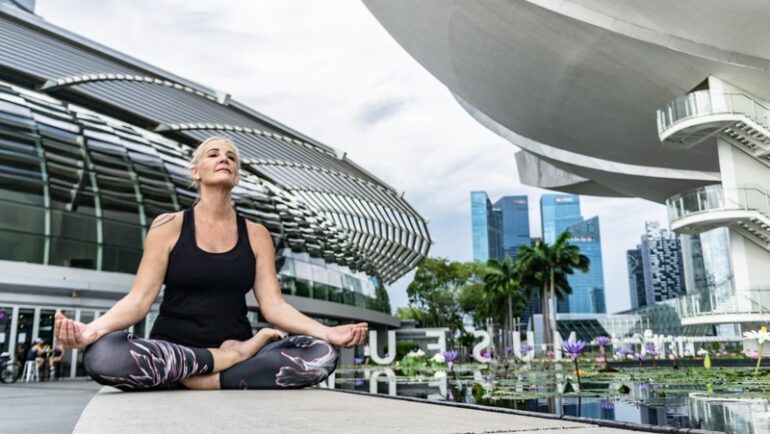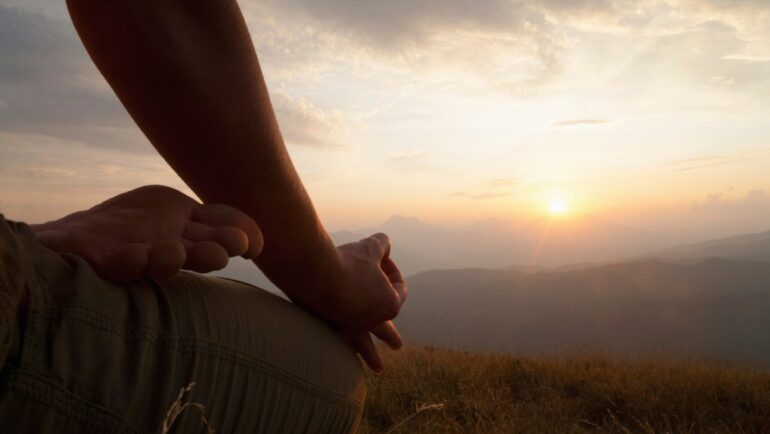In this article, Wanderingyogilee proposes one of the reasons we don’t meditate regularly is we choose meditation paths that do not ‘last the distance’. Read on to work out which path you might wish to start on…
Why aren’t we meditating more?
I have been meditating for about 30 years. In this time, we have designed human and mechanical technology which visually and statistically demonstrate the real positive and long lasting effects of meditation on our mind, body and our soul.
From MRI scans, which show what happens to brain neuroplasticity when you meditate, to Youtube videos from celebrities extolling the virtues of various types of meditation…
Meditation is trendy, but doesn’t seem to stick as an everyday practice for most people.
The Science of Meditation
A few facts around meditation which should get people to the seat, but probably won’t.
- Our cortex shrinks as we get older – it becomes harder to figure things out and remember stuff. But multiple studies have shown that 50-year-old meditators had the same amount of gray matter as 25-year-olds. I am one of those 50 year plus meditators, and I am always surprised at how much slower the young ones are at catching nuances. Hm….
- Without regular ‘exercise’, the amygdala (linked to processing sadness, anxiety and a myriad of negative emotions) shrinks in size. Meditation exercises this area. You get less worried, experience less fear.
- Regardless of the type, meditation lowers levels of the stress hormone cortisol, enhances the immune response, lifts mood, helps us recover more quickly from stress and sharpens focus. Sign me up on this one, too please.
There are loads more benefits, too many to list. Google them. These alone would make me want to sign up. But where to start?
I think one of the major reasons we don’t meditate more or even at all, is we simply don’t where to start.
Because some meditation styles (approaches, brands, ways) will give us benefits in areas greater than the physical and mental.
Some will bring us daily peace and others will change who we are – our personalty, our belief systems.
The path is wide AND deep
When I first started meditation, most people thought I was attempting to either ‘zone out’ or ‘get high’ (this was the naughty nineties). I didn’t wear the compulsory fishermans pants, preferring to stay in my Olivia Newton-John tights with silver leg warmers.But I could feel what it was doing to help me balance myself, become more ‘me’.
At the time, I was not comfortable with some of the new-age philosophy being attached to it, and am still not. Nor do I like seeing it being corporatised, which seems to result in it losing much of the essence.
Still I persisted, sometimes for long periods of time (up to 40 minutes), other times, short (10 minutes). I would go through phases of daily, and then it would drop off to three times a week, sometimes to once a week. Sometimes I would go as long as two weeks without meditating.
I noticed different meditation techniques seemed to have different affects on me. I started to distinguish this difference based on its spiritual impact – either wide or deep. And I discovered that other people had also noticed the same thing and written about it. Here are your options.
Wide like the open Ocean – Option 1

Known in my spiritual tradition as Shamata – these calm of the fluctuations of the mind. This category includes meditation practices which have only occasional references to spirituality – mindfulness programs such as MBSR (Mindfulness Based Stress Reduction), most meditation taught by most meditation teachers in fact. This type of meditation creates an immediate impact of peacefulness afterwards, but this state is usually short lived, requiring short daily practice to keep the peacefulness.
Your essential identity is never challenged. How to spot them? There is a lot of reference within the meditation practice itself to the physical set up, breath work, and staying in the seat. Visualisations, yoga nidra, and most meditation under 15 minutes is this kind of meditation.
Deep like the Ocean – Option 2

In my spiritual tradition known as Vispassna – these are the practices which alter who we are – they challenge our identity and why we hang onto our deepest beliefs and thoughts. Vispassna is considered the place of true peace and enlightenment, but its reality cannot be more different to this picture of eternal bliss painted by those who, in my humble opinion, have not done enough vispassna.
Vispassna is emotionally and psychically challenging, and when you are in the thick of it, there is not much peace. Perseverance though, brings immense wisdom and insight – with startling clarity of us in relation to others and vice versa.
This type of meditation is characterised by significant sensory deprivation such as long periods of sitting, silence, when on retreat, no reading, no writing, no phone, no talking, 1 meal a day. It’s like a meditation ultra marathon. When you get out the other side, you have changed. Forever.
EVERY FORM OF MEDITATION HAS ITS OWN NEURAL PROFILE and DELIVERS DIFFERENT BENEFITS. WyogiLee
How to choose?
What type of meditation do you like to do? And what is its affect on you? Here are some examples…
Example 1 – I love listening to a guided meditation from one of those apps as I lie in bed before sleeping.
That’s Shamata. Unlikely to change who you are. And it might might work sometimes getting you to sleep and not others.
Example 2 – I meditate every morning, I go outside, sit down and am silent for 15 -30 minutes. I focus on my breath, and when my mind wanders I come back to my breath.
That’s also Shamata. Removes fluctuations of the mind. Loads of practice in attention and presence. You may experience peace, an intermittent connection to the universe. It might get you wishing to explore more.
Example 3 – I settle into the seat, use my breath, focus on a particular mantra or dharma, usually topped off with some silent meditation. Sometimes I see colours, hear sounds of insects, or bells. My meditation can be for 20 minutes or one hour. Sometimes I forget the time.
Type of meditation: Vispassna. Long term changes to brain functionality can be expected. Positive changes in identity for sure. Probably some universal connection happening regularly, which can be a little freaky. And you might expect some of your less attractive personality features to iron themselves out.
But please, don’t get hooked on having the ‘right’ type of meditation – its practice, not perfection. And there is no one right path. And they do all head in the same direction.
And remember what you are looking for right now, may not be what you will always want.

Design your personal meditation practice
- If you want a transient peaceful state of mind, an emergency repair device for a bad day or week, practice about 10 minutes a day every so often. Go with meditation practices that focus on body work, breath. You will be bored with the others anyway.
- To create a continued state of peacefulness, meditate for at least 20 minutes 3 times a week (yep, that’s the research). Regular practice improves the brain’s capacity to rewire itself away from bad habits. Explore meditation techniques asking you to focus on an idea or concept (such as unconditional love, compassion, peace).
Note: Shamata practices of gratefulness need to include something around unconditional love for YOURSELF – empathic resonance (concern only for others) actives a neural alarm around pain. Compassion, on the other hand involves brain circuits around warmth, care and concern (for us all). Workers in high crisis people oriented business burn out because of this empathic neural impact.
- If you want to change or alter traits or ‘personality’, meditation practice needs to increase in time and intensity to daily and 30 minutes or longer. Focus shifts from peace to insight and awareness of yourself and then others. Meditation practices with a strong spiritual tradition becomes of paramount importance. You bed down important concepts (such as the four noble truths, or one of the Five Precepts), with long periods of quiet contemplation. This is a ‘high performance’ meditation activity. Dedication, consistency, and unwavering moral virtues in the face of the stuff that will be inside you waiting to get out is key.

In summary, short daily doses of meditation will not get us to the highest level of lasting positive change—even if we continue for years—without some of the following: smarter practice (reading this article helped, I hope), targeted feedback from yourself, a master teacher, and a sangha.
You may be hooked on the idea of being ‘zen’, but seriously, is vispassna for you, when all you want is a couple of days away from the kids?
THE ALL DANCING, ALL SINGING NATURE OF MEDITATION PROMOTIONS MEANS YOU ARE NOT AWARE OF THE NEURAL CHOICE THAT BEST SUITS YOU. YOU ARE BEING ASKED TO BUY A MASERATI AND ALL YOU NEED RIGHT NOW IS A VOLKSWAGEN WYLee
Becoming better informed as meditators, regular or once in a blue moon, is key to finding meditation practices that work for you. Learning to drop your ego on what you think you ‘should’ do, start with small baby steps, and learn to enjoy the wild journey your mind and soul will go on.
If you would like to regularly practice and you are in the Gold Coast area, there is meditation on Sunday and Monday afternoons at 5.30 pm AEST You can book a spot with me using the link below
Meditation Sundays and Mondays with WanderingYogiLee








